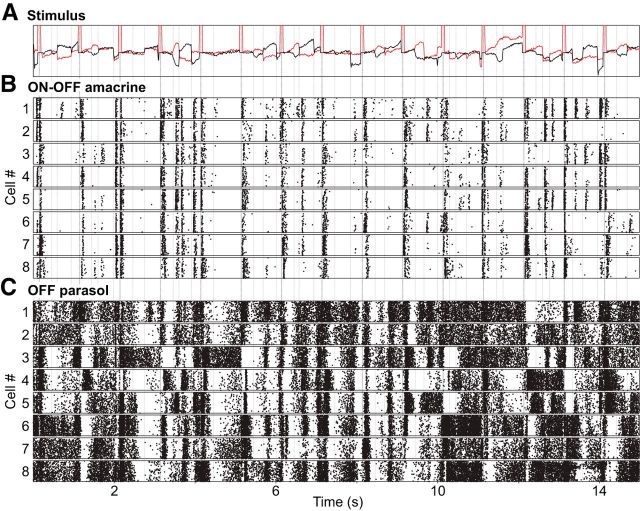Figure 9.
Responses of PACs and parasol cells to moving natural scenes. A, Stimulus composed of monochrome images of natural scenes was moved over the retina with a trajectory determined from recordings of the eye position of a fixating macaque monkey, with superimposed simulated saccades (see Materials and Methods). Red and black traces show the horizontal and vertical components of movement respectively over time, with discrete simulated saccades (abrupt horizontal deflections indicated by periodic pulses in the red trace) interspersed with slower and smaller fixational eye movements. For visual guidance, vertical lines indicate saccades above an arbitrary amplitude. B, Responses of eight PACs simultaneously recorded are shown in raster format; each tick represents a single spike, and each row represents a single presentation of the repeated stimulus. Strong responses occurred primarily at large image movements, mostly saccades. C, Responses of eight OFF parasol cells, each of which exhibits substantial receptive field overlap with the correspondingly numbered PAC in B, recorded simultaneously with the data from B. Parasol cells also exhibited strong responses at image transitions, but spikes also occurred at times when the image was static or moved slowly.

